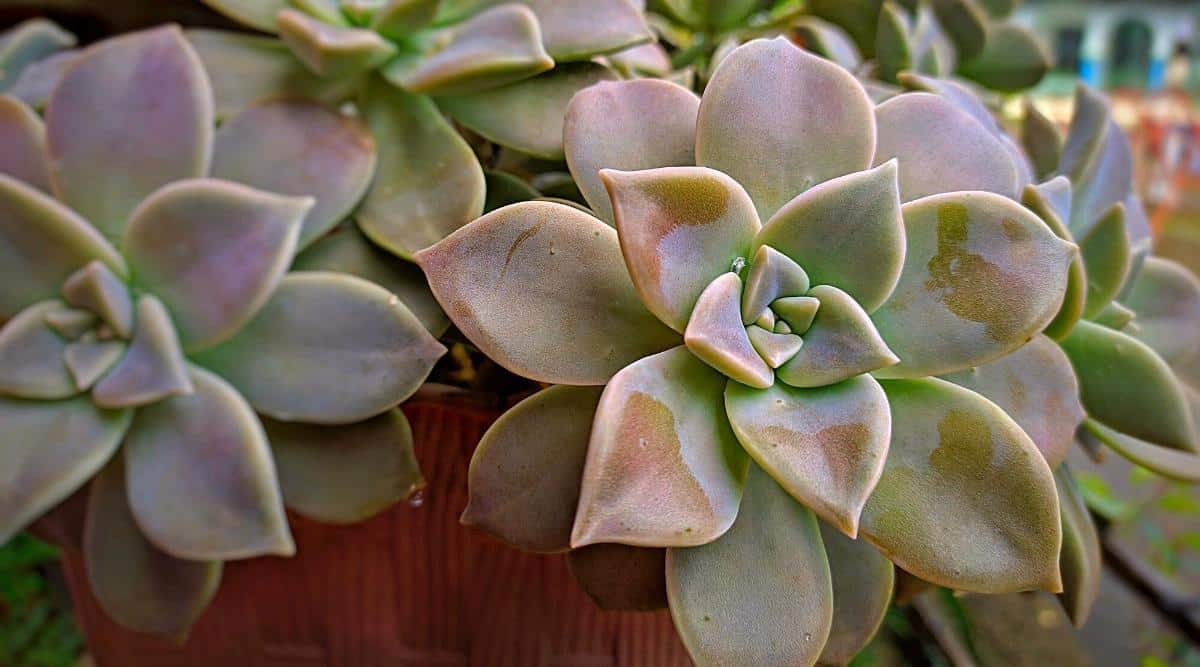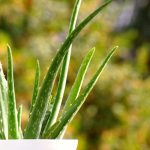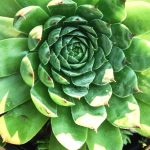Ghost plants, with their ethereal appearance, are sought-after succulents that often leave new owners wondering about their sunlight needs. Gardening expert Emily Horn offers insights into the direct and indirect sunlight requirements of ghost plants and suggests optimal placement within your home.
The ghost plant stands out among succulents for its unique, almost ghostly aesthetic characterized by blueish-gray or pinkish-yellow foliage. The key to achieving these distinctive looks lies in the amount of sunlight the ghost plant is exposed to.
While typically thriving in sunny conditions like most succulents, ghost plants have specific sunlight requirements tailored to their growth and appearance preferences. Factors like plant shape, coloration, and light levels play crucial roles in determining the ideal sunlight exposure for ghost plants.
To attain the desired compact or trailing growth with hues ranging from reds to blues, understanding the sunlight needs of ghost plants is essential. So, how much sunlight do these captivating plants truly require? Let’s delve into the sun’s role in ghost plant care.
Insights at a Glance
Tailoring sunlight exposure to your ghost plant’s growth objectives is key. For vibrant, compact specimens in warm tones, ensure a well-lit site with at least 6 hours of daily sun exposure. On the contrary, if you prefer a cascading plant in cool shades, opt for a spot with low or indirect sunlight, although this may lead to stretched growth and leaf drop.
Exploring in Depth
Most gardeners lean towards cultivating a compact look for their ghost plants, while some opt for a cascading display from hanging planters. Personal preferences for pinkish-yellow or blueish-gray foliage further emphasize the importance of sunlight exposure in determining outcomes.
Effect of Light on Growth & Color

The ghost plant, scientifically known as Graptolpetalum paraguayense, boasts a rosette form and belongs to the Crassulaceae plant family. Originating from the arid regions of Mexico, this succulent thrives under bright, direct sunlight, typically garnering a robust, compact growth profile with striking leaf shades.
In full sun conditions, characterized by a minimum of 6 hours of daily light, ghost plants exhibit shorter, denser growth with color variations leaning towards reddish pinks or yellow. However, they can adapt to lower light levels with elongated stem growth, resulting in a vine-like appearance and bluish-gray foliage rarely seen in the plant kingdom.
Ghost plants acclimate well to reduced light intensity, making them ideal for mixed succulent arrangements where their trailing growth adds aesthetic appeal.
Impact of Light on Watering

When deciding on the plant’s placement, factor in the watering requirements influenced by light exposure. As desert natives, ghost plants have low water needs, but higher sunlight levels lead to increased water consumption. In contrast, plants in shaded areas retain water longer, posing a risk of overwatering.
To transition a ghost plant to a brighter location, do so gradually to prevent leaf scorch, especially during summer. A slow adjustment process spanning 7-10 days allows the plant to acclimate successfully to the new light conditions.
Relocating Your Plant

Transition your ghost plant gradually to sunnier spots by increasing exposure over a few days to avoid stress. This acclimatization method applies when moving indoor plants outdoors as well during summer.
Avoiding Plant Shock
Plant shock can occur when changes happen too rapidly, leading to the shedding of leaves as a common symptom.
Transitioning from high light to low light can happen relatively quickly, but any sudden or significant environmental adjustments can stress your plant.
Light Levels and Dormancy


Even though houseplants are mainly indoor residents, they experience dormant phases or periods of stagnation influenced by combinations of light levels and temperature changes.
Most cacti and succulents belong to either winter-dormant or summer-dormant categories in terms of their dormancy cycles.
Winter-dormant plants thrive in late spring, summer, and early fall, with rest periods during late fall and winter.
The reverse holds for summer dormant plants, resting in summer and growing from fall to spring. Generally, Graptopetalum species fit into the summer dormant group.
Regarding repotting, avoid doing so in summer. Wait for the active growing season to refresh the soil and upgrade containers if necessary.
Final Thoughts
The amount of light your ghost plant needs depends on the desired outcome. Providing 4-6 hours of direct sunlight typically produces the rosette shape with pinkish hues. However, some gardeners prefer shadier environments to enhance the ghostly colors. Whichever you opt for, ensure adequate watering and well-draining soil for optimal growth!






